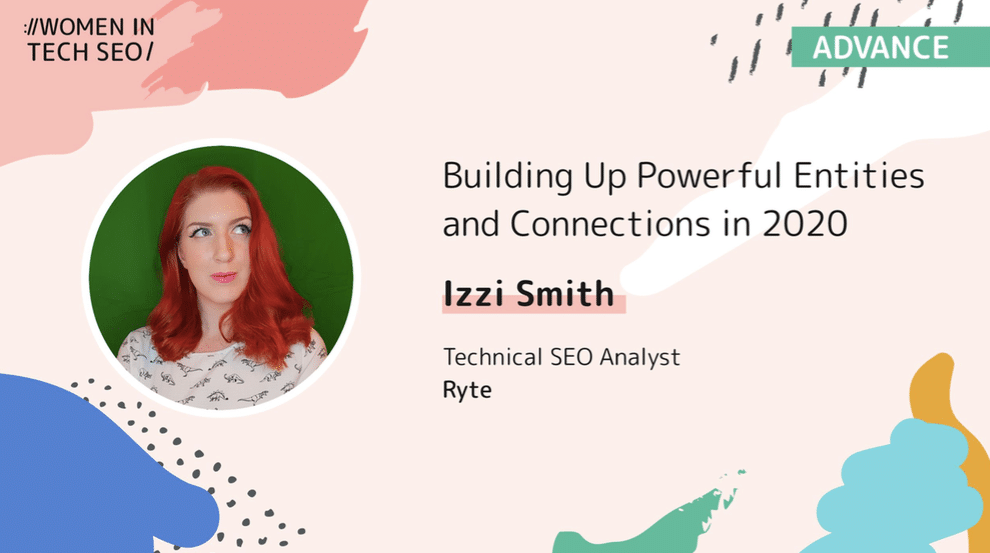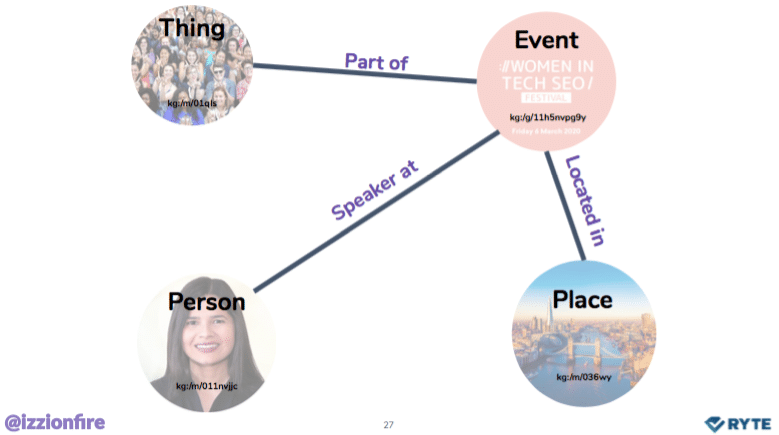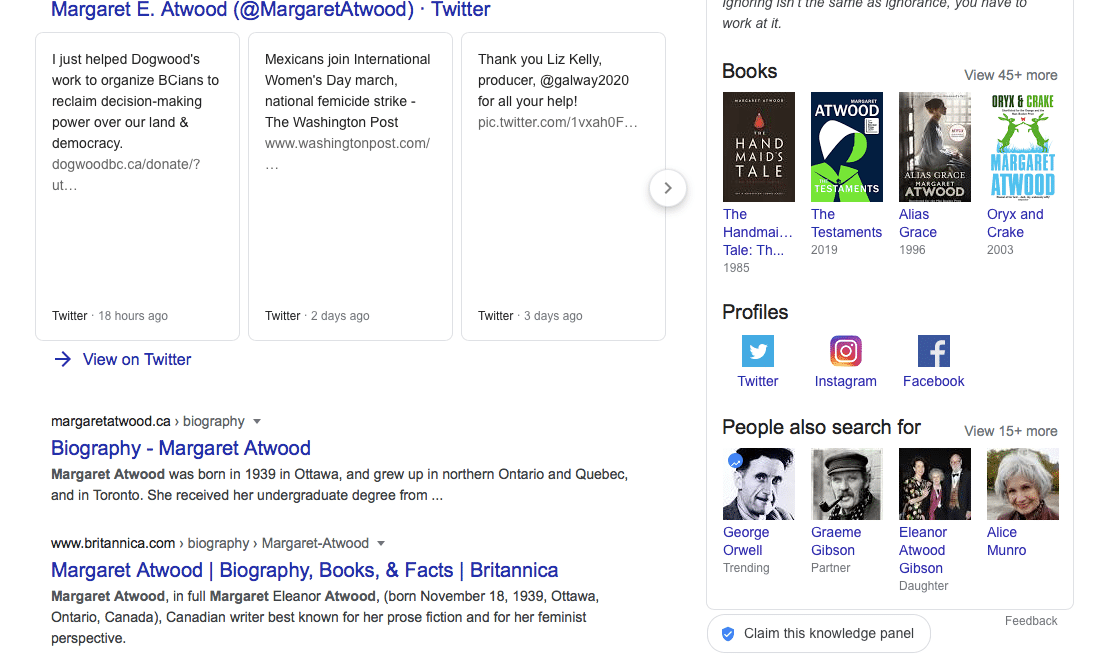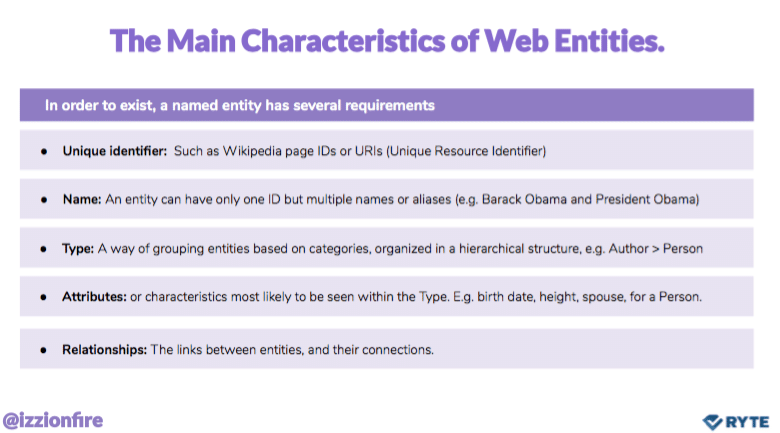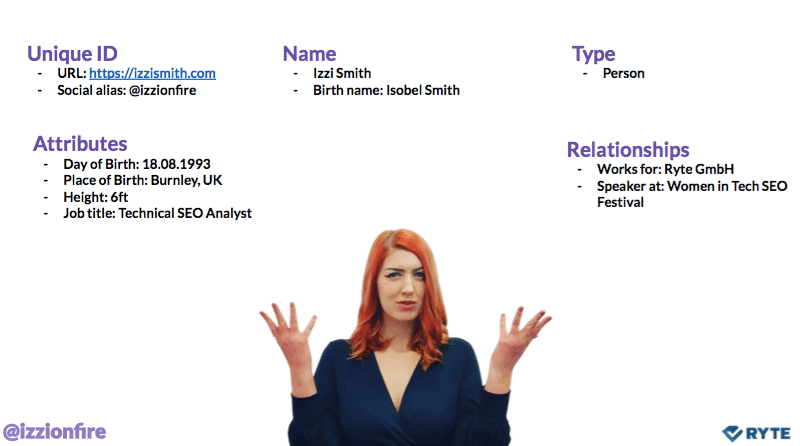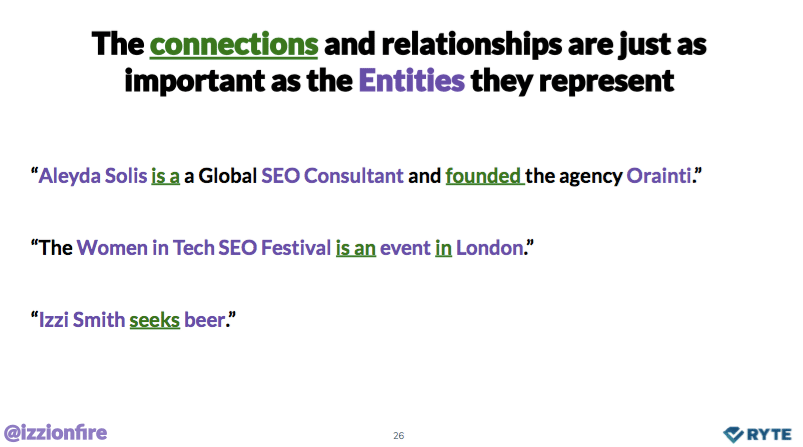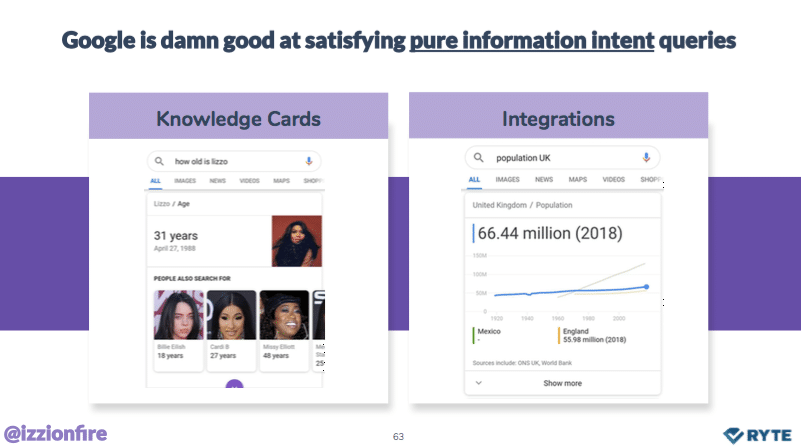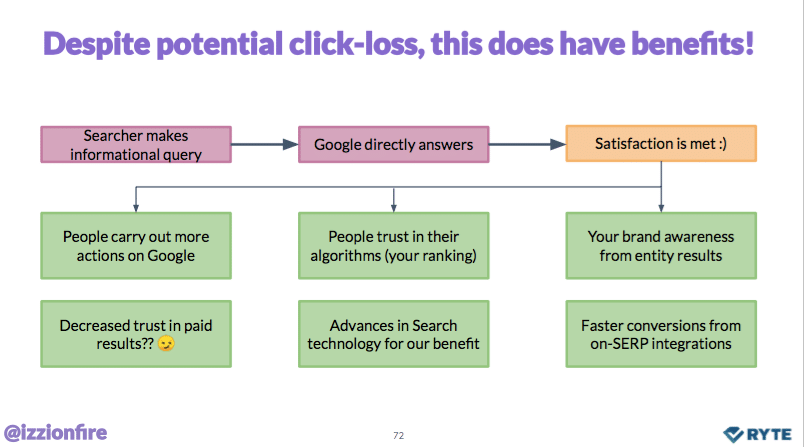January 6th 2020 saw the entire Sweet Digital team heading down to the first-ever Women in Tech SEO Festival. Not only were we ecstatic to attend the event, but we were also incredibly proud to be silver sponsors. Being surrounded by amazing, talented and supportive women made the trip so much more than worthwhile, not to mention the learnings we were able to take away with us. We can’t wait for the next festival.
One of the talks that have stayed with me was presented by Izzi Smith, known to many as either ‘Izzi on Fire’ or ‘Izzi – creator of hilarious memes’. This is the second time I have had the pleasure of listening to Izzi speak, and I was equally as impressed the second time around with the depth of proficiency she holds.
On this occasion, she was imparting her knowledge about Google entities. For those who weren’t able to make the event, here is a summary of her talk, with accompanying slides.
A five-ish-minute intro to Google entities
Historically, Google used information retrieval solely for the generation of ‘blue links’, known to most as organic listings. This was indeed a much simpler time for SEO’s, who only had to focus on producing content that successfully targeted the same search terms as used in the search query. But was the searcher actually getting what they were looking for, in the format they were interested in?
Fast forward to 2020, and Google is now pulling relevant information from a variety of sources to answer search queries.
So, what is a Google entity?
Izzi Smith explained that Google entities are:
- Language agnostic: They can provide information in the form of images, videos and more.
- Universally available: Due to the wide variety of formats that Google can now understand.
- Works to improve searcher UX: By giving them a variety of answers to broad queries in a range of formats.
- Reliable machine understanding of data: We love you, Bert.
Using Izzi’s example, if we were to search for Aleyda Solis, Google would use natural language programming to build relationships that can look something like this:
And will display these relevant and informative pieces of information within the search results. Google will continue to make connections to subjects to provide as much information to satisfy search intent as possible. Let’s look at another example and how this translates into the SERPs.
This is how Google may approach a search for Margaret Atwood:
And here is what appears in the search results:
Google gathers all of this information to provide:
- Knowledge panel
- Secondary entities – profiles, quotes and books
- People also ask boxes
- Twitter cards
This is just one basic example of what Google can produce using entities. Izzi offers more examples showcasing additional elements of entities in her presentation, but essentially…
Main characteristics of Google entities
Unfortunately, this means that not all of us can claim entity-status just yet! But as you can see, it is possible to optimise for entities – increasing the opportunity to capture more space in the SERPs, which is essentially what every SEO is hoping to achieve.
Izzi ran this checklist against her web presence:
It looks like she is making good progress; however, none of her attributes were:
- Machine classifiable
- Structured or
- Connected…
Yet!
Unless Google can establish the relationship between the information it finds in cyberspace, it cannot connect entities.
The impact of Google entities in SEO
Studies have shown that 40-70% of search queries either mention or target specific entities. Entities are a fantastic way to showcase pure information – that is, questions that can be answered in a couple of words:
This has resulted in an influx in zero-click searches – 50% to be exact. While this may appear to be negative, the beauty is that these pure intent answers may actually be reducing the number of clicks to your site that hold little-to-no value. Traffic to your website is great, but if someone is coming onto your site, finding an answer to a question and then leaving; they never had any intention of investing in your brand. Therefore you haven’t really lost anything by not gaining that click.
In addition to reducing low-value clicks to your site, entities offer additional benefits:
There has been a lot of manipulation of the SERPs over the years. The introduction of entities could be a step towards a better web ecosystem, where trust is built across the board.
So, all in all, Izzi has us convinced:
Izzi’s presentation was so informative that we felt we couldn’t do it justice by cramming it all into one blog post. Next month, we will be explaining how you can optimise for entities – with advice, presentation slides and memes from the legendary Izzi Smith.
Want to know more?
Latest Blogs
Beginners Guide to Canonicalisation and URL SEO
In the multifaceted industry of digital marketing, there’s a vital concept called Canonicalisation – often overlooked but crucial for a…
Understanding and Implementing URL Redirects
The digital landscape is vast and complex, making URL redirection pivotal in ensuring users and search engines seamlessly transition to…
How Important is it to Get Your Site Architecture Right?
In the vast digital landscape, your website is more than just a virtual storefront – it’s a dynamic entity that…
Top Tips for Extracting Data from Google Search Console
In the hyper-competitive digital marketing landscape, understanding your audience’s preferences, analysing website traffic sources, and addressing technical SEO issues are…
What Are Core Web Vitals And How Can You Improve Yours?
What are core web vitals? Core web vitals are a set of user-centric metrics that assess particular aspects of user…
How to create a WordPress website
Would you like to create a website for your business or yourself? Is the thought of hiring developers and hosting…
